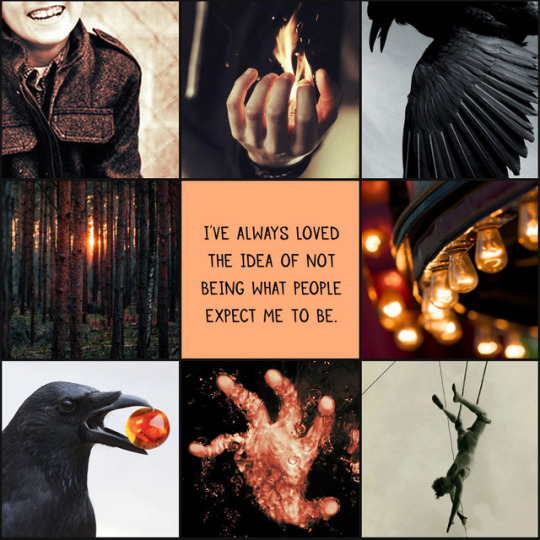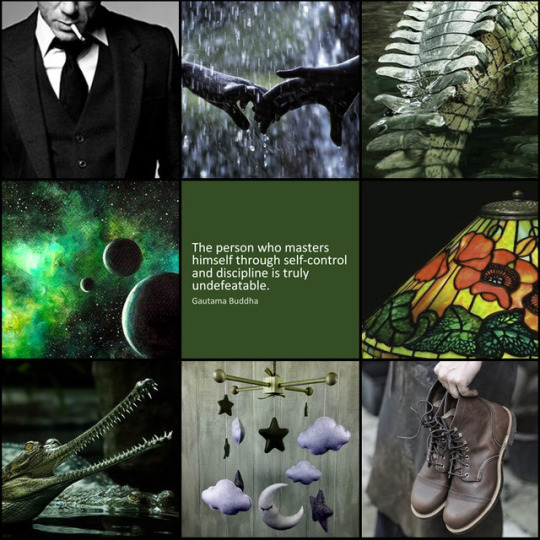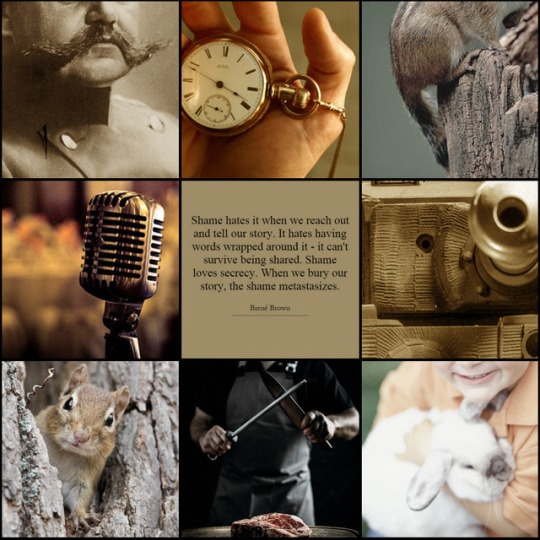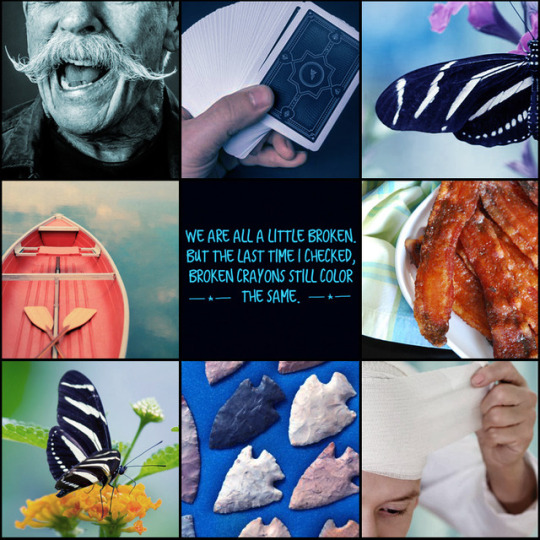#I'mm a little worried about the 'person' pic for Sasha (top left) but he IS like a domestic James Bond so I guess it kinda fits? :P
Explore tagged Tumblr posts
Photo






Psychonauts Daemon AU
The concept of daemons is borrowed from the His Dark Materials series. A daemon is a person’s soul manifested outside of their body in a tangible, physical form, which permanently settles into the form of the animal that most resembles them in character as the individual matures. Human and daemon are not separate beings, but two halves of one mental coin, which means that they each know everything the other does, thinks, and senses. Dæmons are almost always the opposite gender of their human counterparts, and have a distinct personality compared to their humans to a certain degree, as human and daemon represent different aspects of the same whole.
(Shout out to @x-i-l-verify who was and is very helpful in planning this au, and much of this post’s format is inspired by her own daemon aus.)
RAZPUTIN AQUATO + LUMISTEA (CARRION CROW)
(Since Raz is only ten years old in Psychonauts, he’s rather young and not necessarily settled yet. This is just me guessing what form his soul might settle as, the way he’s going now.)
Carrion crows can be solitary nesters, but they also form monogamous pair bonds and mate for life. They may end up forming family groups with their young, and during the winter they will join mixed species flocks of birds, showing a flexible social structure. Carrion crows are highly intelligent birds and have proven to be very quick learners. They have many innovative ways of solving problems and obtaining food, such as dropping shelled nuts on the road so cars can run over the hard food and open it for the crows to eat. These crows will make their nests out of anything available and have a very wide diet, including but not limited to carrion, bugs, human scraps, nuts, and berries. They will also steal food from birds of prey and foxes when given the chance. Carrion crows will confront large birds of prey and any other birds that might invade their territory, even joining in mobs with their neighbors to help fight off offenders. These bold birds will go anywhere there’s food, being wary but not especially fearful of humans. Carrion crows can be very playful and will often do things like slide down snowy hills for fun. They also have a strange obsession with fire and often bring burning materials back to their nests, when most other animals would avoid fire entirely.
Raz is persevering, confident, and supportive. Lumistea is Raz’s problem-solving, practical, adaptable side. Both sides are quite playful.
Name Analysis:
Lumistea is an amalgamation of the Romanian words for “bright” (luminos) and “star” (stea).
LILI ZANOTTO + DEMETRIO (MAHOGANY GLIDER)
(Same deal as Raz. Lili is still too young to really settle, but this is my guess as to what form her soul might take based on how her personality is currently developing.)
Pairs of mahogany gliders are monogamous, and each pair will aggressively attack other gliders that invade their territory. Despite being socially monogamous, pairs tend to forage alone and sleep in separate dens. Foraging alone makes the species less conspicuous to predators like owls, so their independence is mostly in defense against predators on their part. Mahogany glider pairs defend their territory by each patrolling borders separately. This patrol is called a “foraging loop”, because it allows them more coverage, as well as allowing them to identify new food sources in their territory. The species is omnivorous and will change its diet seasonally in order to get the most nutrients out of available food rather than sticking with just one type of food. A pair has 6-13 dens within their territory so that they don’t have to always return to the same den when they make their foraging loop. Despite being rather quiet, these gliders have a high metabolism and are very active and mobile. They often prefer more open habitats so they can make longer glides from the tops of tall trees, which suits their larger body size.
Lili is defensive, proactive, and stubborn, while Demetrio shows her more anxious, quiet, and sentimental side.
Name Analysis:
Demetrio is the Italian, Portuguese and Spanish form of Latin Demetrius, which means "loves the earth" or "follower of Demeter." Demeter was the goddess of corn, grain, and the harvest. It was believed that Demeter made the crops grow each year.
SASHA NEIN + ATHENE (GHARIAL)
Gharials are solitary, specialized hunters; they employ a 'watch and wait' style to eat fish almost exclusively, and are therefore dependent on good fish supplies. They only leave the water to bask and nest, and they tend to revisit the same basking spots. Gharials are polygamous and spend a great deal of their time alone. When they do come together to bask and nest communally, it’s mainly incidental with little social bonding. Gharials will tolerate other gharials in their immediate vicinity when basking, and nesting females will tolerate fellow nesting females. They are only really territorial during the breeding season. While not involved in any sort of young-rearing process, males will readily allow hatchlings (not necessarily their own) to climb and sit on top of them. On the other hand, gharial females are very dedicated mothers. After digging several 'trial' nests in the sand, they’ll lay their eggs and guard the nest through about 70 days of incubation. They’ll help to excavate newly hatched young, then 'escort' their young to the nearest body of water. Female gharials will stay near their young and protect them for a period of several weeks to several months. During this time the hatchlings usually stay together in groups near the female.
Sasha is dedicated, calculating, and patient while Athene embodies his more protective, straight-forward, and picky side.
Name Analysis:
Athene is a variation of Greek myth name, Athena, which is the name of the goddess of wisdom. Plato fancifully derived her name from a-theo-noa, meaning "mind of God". Her Roman name is Minerva, which means "intellect".
MILLA VODELLO + TADEO (EGYPTIAN PLOVER)
The Egyptian plover is one of the tamest of birds, having been reported living happily alongside villagers and fishermen. It unearths worms, mollusks, insects and their larvae by probing with its bill in damp sand or by digging into the surface with both feet. This friendly, social bird can be found near desert river water in pairs, small groups, or large flocks, but almost never alone. They only seem territorial during breeding season, having no qualms about chasing off other invading plovers or birds of prey if it meant protecting their babies. The plover’s eggs are not incubated, but are buried in warm desert sand. To keep the sand from becoming too hot, the parents take turns sitting on the eggs with water-soaked bellies to cool them and keep the babies from burning to death. The chicks may even drink water from the adult's belly feathers after hatching. The Egyptian plover is sometimes referred to as the crocodile bird for its symbiotic relationship with crocodiles. According to Herodotus, the crocodiles lie on the shore with their mouths open and a bird called "trochilus" flies into the crocodiles' mouths so as to feed on decaying meat lodged between the crocodiles' teeth. There is no photographic evidence of this occurrence, but plovers have been observed to be remarkably bold in the presence of crocodiles and may run across their backs from time to time.
Milla is bubbly, compassionate and optimistic, while Tadeo represents her more enduring, protective, resourceful side.
Name Analysis:
Tadeo is the Spanish form of Latin Thaddaeus, meaning "courageous” or “large-hearted."
MORCEAU OLEANDER + JARONA (EASTERN CHIPMUNK)
Eastern chipmunks can be found in many places; they are tolerant of human habitation, sometimes burrowing under buildings when given the chance. They are omnivores with a wide diet of seeds, nuts, fruits, insects, worms, eggs, and mushrooms. They spend most of their time foraging for food on the ground, but they will also climb trees to obtain food. These chipmunks are solitary, polygamous animals; females are commonly left to raise their offspring on their own, while males leave to mate with more females. They’re great planners, constructing burrows with numerous entrances and exits, complicated tunnels, and chambers for storage and nesting. Each chipmunk will fiercely defend their territories from intruders. Their aggression is typically more vocal than violent, but fights will break out when other chipmunks ignore the territorial warning calls of the resident chipmunk. They conceal their burrow entrances with leaves and rocks in order to further avoid predatory attention. A chipmunk usually stays in its small home range its entire life, only venturing further during breeding season or when food is scarce. Despite being such solitary animals, chipmunks are also very vocal. They use a wide variety of chips, trills, and calls to defend their territories and to alert other chipmunks of predators in the area.
Oleander is blunt, passionate and highly assertive, while Jarona embodies his planning, ambitious and insecure side.
Name Analysis:
Jarona is the anglicized form of Hebrew Yarona, meaning "to shout and sing."
FORD CRULLER + FRITZI (ZEBRA LONGWING)
(Ford’s daemon is rather unstable due to his fractured psyche. When he moves away from the giant psitanium deposit and adopts one of his many different identities, his daemon tends to flicker and become a little fuzzy, like a photo out of focus. It kind of freaks people out.)
Zebra longwings will forage and roost alone, but are also likely to be found in both large and small groups. They roost communally at night in groups of up to 60 adults. This occurs nightly and they return to the same roost each time. In their groups they display a group-startle response, where all the gathered butterflies will react together in response to a disturbance, which deters predators. Zebra longwings usually live in a very stable, tropical environments, and they do not hibernate. Non-hibernating butterfly species live longer and have higher fitness than hibernating butterflies. Zebra longwings are a migratory species, but unlike most butterflies, they do not display wanderlust, nor are they known to migrate at particular times of the year. They do, however, migrate in order to locate resources and establish the most efficient paths to reach these resources. This species is surprisingly territorial, but it's mostly observed in males who guard their potential mates. Longwings are unusual in feeding on pollen as well as on nectar; the pollen enabling them to synthesize toxic substances in their bodies. They use their bright colors and contrasting wing patterns to warn others of their toxicity, asserting themselves as poisonous and unpalatable to any potential predators.
Ford is good-natured, intuitive and cooperative, while Fritzi shows his more assertive, analytical, efficient side.
Name Analysis:
Fritzi is a pet form of German name Friederike, meaning "peaceful ruler."
~ . ~ . ~ . ~
SOURCES:
http://www.daemonpage.com/forum/viewtopic.php?f=4&t=24702
http://www.daemonpage.com/forum/viewtopic.php?f=4&t=24456
http://www.daemonpage.com/forum/viewtopic.php?f=4&t=24590
https://en.wikipedia.org/wiki/Egyptian_plover
http://what-when-how.com/birds/egyptian-plover-birds/
http://www.daemonpage.com/forum/viewtopic.php?f=4&t=24671
http://daemonpage.com/forum/viewtopic.php?f=4&t=24271
#psychonauts#daemon au#razputin aquato#lili zanotto#sasha nein#milla vodello#coach oleander#ford cruller#ALL OF THE PSYCHONAUTS (that we know of...minus Truman#don't know him enough sorry)#character analysis#daemons#psychonauts daemon au#aesthetic#breezy writes#moodboard#my first try at aesthetics they were so fun#also a bit irritating coz I wanted to pack in as much symbolism as possible :P#I hope these analysises are...clear enough#I'mm a little worried about the 'person' pic for Sasha (top left) but he IS like a domestic James Bond so I guess it kinda fits? :P#*coughs coz I used some Richard Grayson aesthetic for Raz LOL they're pretty similar???*#tried to go for a hand motif in the top middle squares#I love how I could make a sort of progression from Sasha to Milla's hand motif :'D#bottom middle square is generally 'negative memories' stuff#Lili's is an old dentist chair hahaha;;;;#was going to put a burning house in Milla's but that was a bit...much#rocking horse was more subtle (I think...there's a figment of one in her secret room?)#AND it matches Sasha's star mobile (which I believe hung over his crib where he watched his mother die)#complementary aesthtics!#the rest I hope are kind of obvious
45 notes
·
View notes